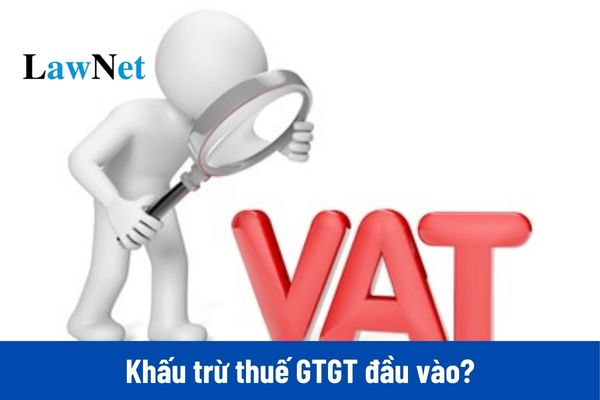What are cases where the input VAT must not be deducted in Vietnam? What are the conditions for VAT input deduction?
What are cases where the input VAT must not be deducted in Vietnam?
Pursuant to Clause 15, Article 14 of Circular 219/2013/TT-BTC, there are specific cases where invoices are not eligible for VAT input deduction as follows:
- VAT invoices used are not in conformity with the law such as VAT invoices not stating VAT (except for special cases where VAT invoices stating the payment price include VAT);
- Invoices that do not record or incorrectly record criteria such as the name, address, or tax code of the seller, making it impossible to identify the seller;
- Invoices that do not record or incorrectly record criteria such as the name, address, or tax code of the buyer, making it impossible to identify the buyer (except as guided in Clause 12, Article 14 of Circular 219/2013/TT-BTC);
- Fake VAT payment invoices, erased invoices, blank invoices (without accompanying goods or services);
- Invoices stating value not in accordance with the actual transaction value of goods or services purchased, sold, or exchanged.

Which invoice containing errors is eligible for VAT input deduction in Vietnam? (Image from the Internet)
What are the conditions for VAT input deduction in Vietnam?
Based on Clause 2, Article 12 of the 2008 Law on VAT (amended by Clause 6, Article 1 of the 2013 Law on Amendments to the Law on VAT), the conditions for VAT input deduction are regulated as follows:
- There must be a VAT invoice for purchasing goods or services, or a payment document for VAT at the importation stage;
- There must be a non-cash payment document for the purchase of goods or services, except for each purchase of goods or services worth less than twenty million dong;
- For exported goods and services, in addition to the conditions stipulated in points (a) and (b) of Clause 2, Article 12 of the 2008 Law on VAT, there must be: a contract signed with foreign parties for the sale, processing of goods, or supply of services; a sales invoice for goods or services; a non-cash payment document; and a customs declaration for exported goods.
Payment for exported goods and services, in the form of offsetting payments between exported goods and services with imported goods and services, or repaying debts on behalf of the State, is considered as non-cash payment.
Which Business Entities May Voluntarily Register to Apply the VAT credit method?
Pursuant to point (b), Clause 4, Article 7 of Decree 209/2013/ND-CP, businesses eligible to voluntarily register for the VAT credit method include:
- Enterprises and cooperatives in operation with annual revenue from goods sale or service provision below one billion dong, having fully implemented policies on accounting, bookkeeping, invoices, and vouchers as prescribed by law;
- Newly established enterprises from investment projects of active business entities paying VAT under the credit method;
- New enterprises or cooperatives with investments in, or purchases of, fixed assets, machinery, equipment, foreign organizations, and foreign individuals doing business in Vietnam under contractor agreements, and sub-contractor agreements as guided by the Ministry of Finance;
- Other economic organizations capable of accounting for both input and output VAT.
How does a business paying VAT via the credit method deduct input VAT in Vietnam?
According to Clause 1, Article 12 of the 2008 Law on VAT (amended by Clause 6, Article 1 of the 2013 Law on Amendments to the Law on VAT), businesses paying VAT via the credit method can deduct input VAT as follows:
- Input VAT on goods or services used for producing or trading in goods or services subject to VAT is fully deductible, including the non-compensable input VAT of goods or services subject to VAT that are lost;
- Input VAT on goods or services used simultaneously for producing or trading both taxable and non-taxable goods or services is only deductible for the portion attributable to the production or trading of goods or services subject to VAT. Businesses must account separately for the deductible and non-deductible input VAT; if separation is not possible, input VAT is deductible proportionally according to the percentage of turnover from VAT-taxable goods and services to total sales;
- Input VAT on goods or services sold to organizations or individuals using humanitarian aid funds or non-refundable aid is fully deductible;
- Input VAT on goods or services used for oil and gas exploration, search, and development is fully deductible;
- Input VAT arising in any given month is declared and deducted when determining the tax payable of that month. Should a business discover errors in the declared or deducted input VAT, it may adjust its declaration and deductions; the time limit for such adjustments is up to 6 months from the date of detecting the errors.

